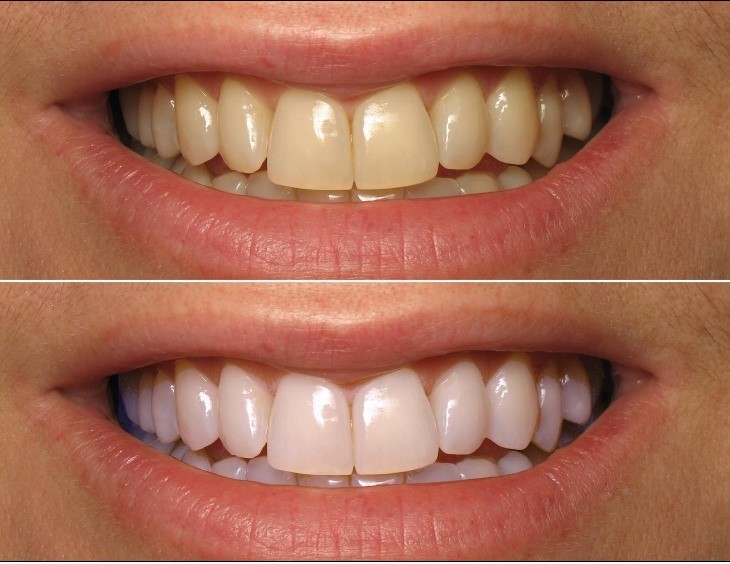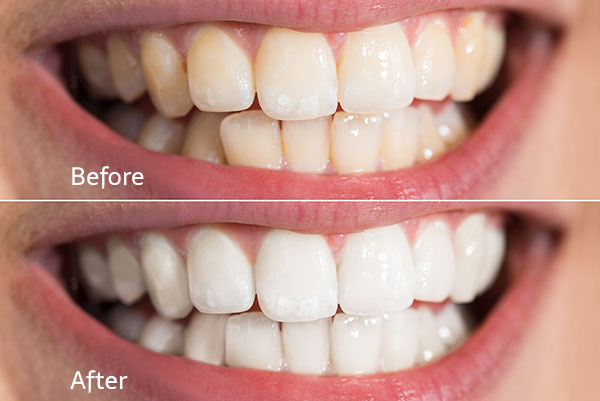Teeth Whitening

Brighten up your smile
Teeth whitening is done on a regular basis so that people can look and feel their best. Teeth can get dull and yellow as people get older. This is related to a combination of factors, including age and what a person eats and drinks. Coffee, tea, and alcohol, for example, can leave a stain on your teeth. Teeth stains can also be caused by smoking and eating meals containing food coloring. Brushing right after eating and drinking can help prevent stains, but it is rarely enough to eliminate the danger completely. Teeth that are discolored and yellow don’t have to stay that way forever.
How can I whiten my teeth without harming them?
Consult your dentist for the safest technique to whiten your teeth. Professional teeth whitening uses a high concentration of bleaching agents to lift stains but not to the point where teeth are destroyed. However, the whitening gel should only be used on teeth and gums that are healthy. There is a lower risk of gum irritation or unwanted tooth sensitivity when you visit the dentist for a whitening treatment.

In-office whitening is a significantly better alternative if you want rapid and dramatic results.
Is it harmful to have your teeth whitened?
The peroxide solutions that dentists regularly employ to whiten teeth have been thoroughly researched. Teeth whitening is not only not dangerous for teeth, but it is also a comfortable and simple approach to improve one's smile, according to research. Normal tooth whitening causes no enamel damage. Some patients may believe that tooth sensitivity is a sign that the treatment is hurting their teeth. This isn't the case at all. Temporary sensitivity is typical, and your dentist will give you post-operative advice to help you manage the symptoms.



